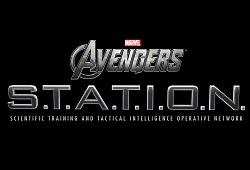
During the 1960s, secret agents were the hottest rage. The success of the James Bond films led to numerous big screen and small screen endeavors that likewise centered on the spy genre, including the Derek Flint and Matt Helm film series and The Man from U.N.C.L.E. and The Wild, Wild West television shows. Hoping to capitalize on the trend, Marvel editor-in-chief Stan Lee co-created S.H.I.E.L.D. along with artist Jack Kirby, bringing the world of secret agents into the world of comic books in the process.
S.H.I.E.L.D quickly became the focal point of the Marvel Comics Universe, a shadowy organization that included Nick Fury, Iron Man, and Captain America amongst its operatives. S.H.I.E.L.D plays an even more pivotal role in the Marvel Cinematic Universe, with both The Avengers and Captain America film franchises – as well as the small screen Agents of S.H.I.E.L.D. – enhancing the importance of the clandestine Strategic Homeland Intervention, Enforcement, and Logistics Division.
Although one traditionally needs to be a superhero, kung fu master, or scientific genius to become an associate of S.H.I.E.L.D., memberships were extended to the general public in May 2014 with the premier of Marvel’s Avengers S.T.A.T.I.O.N. at Discovery Times Square in New York City. Visitors to the museum-like exhibit – which traveled to the Treasure Island Hotel and Casino in Las Vegas afterwards – could test their skills and abilities against those of Captain America, conduct their own scientific experiments, examine artifacts from the Marvel Cinematic Universe, and even earn entry into that world as a bona fide agent of S.H.I.E.L.D.
Upon entering Avengers S.T.A.T.I.O.N., potential “recruits” created their own ID badges, which could then be used to access information within the exhibit itself. A video presentation from Agent Felix Blake – portrayed by actor Titus Welliver in both Agents of S.H.I.E.L.D. and Avengers S.T.A.T.I.O.N. – explained that the Battle of New York from the first Avengers film confirmed the existence of alien beings. For this reason, S.H.I.E.L.D. is in need of new agents to keep Earth safe from future attacks, and Avengers S.T.A.T.I.O.N. is in essence an indoctrination into the clandestine organization.
“It’s absolutely unbelievable,” Stan Lee told Entertainment Weekly after attending Marvel’s Avengers S.T.A.T.I.O.N. shortly after its New York premiere. “I thought of them as simple fictional characters that could have great adventures, and people could enjoy reading them – but now I realize, unintentionally, I was one of the world’s scientists. And what they have done with these characters, this building, and this display is indescribably wonderful and creative. I think that it’ll make any young people that walk through it leave saying, ‘I’ve gotta be a scientist. It’s the most exciting thing in the world!’”
As Stan Lee so enthusiastically explained, science was indeed the centerpiece of Marvel’s Avengers S.T.A.T.I.O.N. Marvel Entertainment teamed with Victory Hill Exhibitions, Discovery Time Square, NASA, and the Science & Entertainment Exchange to craft the exhibit into not only an entertaining compliment to the Marvel Universe but an introduction to the scientific principles that shape that universe.
Astronomy, physics, and neurology were all explored within Avengers S.T.A.T.I.O.N. Visitors could learn the mechanics of Iron Man’s suit, understand the chemical changes that Bruce Banner endures when he is transformed into the Hulk, and even study the stars in a quest to find the location of Asgard, the mythical home of Thor. The area dedicated to Captain America, meanwhile, enabled both adults and children alike to test their physical prowess against those of Steve Rogers.
Marvel Entertainment loaned the exhibit actual props from the Marvel Cinematic Universe, and Avengers S.T.A.T.I.O.N. had a collection of “artifacts” to go along with the science as a result. Costumes worn by Nick Fury, Natasha “Black Widow” Romanoff, and Clint “Hawkeye” Barton were all showcased, for instance, while the areas dedicated to Captain America and Thor contained the First Avengers’ Birth Pod, Loki’s scepter, and a vibranium shield.
“Theatrically, here we never break the fourth wall,” Nicholas Cooper, Victory Hill executive creative director, explained to ScreenCrush in May 2014. “So we do have Loki’s costume, we could’ve put it in there, but it’s kinda like, he did get captured and didn’t go back to Asgard butt naked. We have the scepter because it was left on Stark Tower in the battle with Thor. We don’t have the Tesseract because it went back to Asgard, but what we do have is the shard that was harvested in Captain America by Howard Stark.”
During the 1960s, Stan Lee and a team of Marvel artists that included Jack Kirby and Steve Ditko created a universe that has transcended the times and – thanks to the advent of the Marvel Cinematic Universe – is even more popular in the twenty-first century. For over fifty years, comic book fans have fantasized about being part of that Marvel Universe, and Avengers S.T.A.T.I.O.N. goes a long way in helping that dream feel like reality.
For those who experienced the exhibit, the words “Avengers Assemble” will never be the same again.
Anthony Letizia

